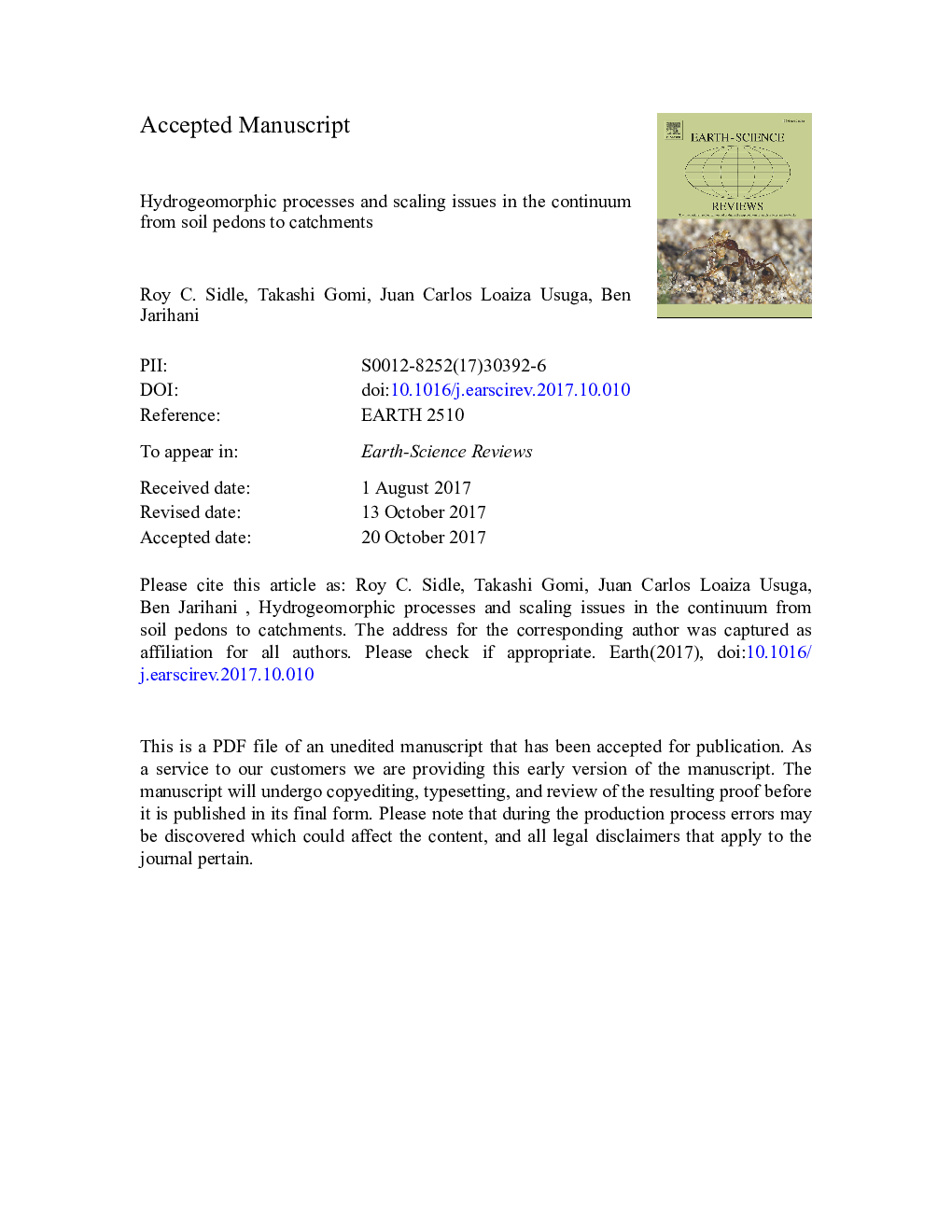| Article ID | Journal | Published Year | Pages | File Type |
|---|---|---|---|---|
| 8913125 | Earth-Science Reviews | 2017 | 65 Pages |
Abstract
Understanding integrated hydrological phenomena in catchments is difficult because of the fragmented nature of soil physical and hydrological data, given these are typically derived from pedons or small plots. Runoff plot and lysimeter or pedon-scale studies do not capture the complexity of surface and subsurface flowpaths in hillslopes. Because pedon/plot scale results are not easily transferable to hillslope and catchment scales, theoretical and empirical approaches to quantify hydrological dynamics based on such 'point-scale' data tend to over- or underestimate parameters and fluxes. Unit area sediment flux measured during storms typically (but not always) decreases from small plots to hillslopes owing to sediment deposition and re-infiltration of overland flow in localized areas. At broader scales, re-entrainment of previously stored sediment complicates this generalization, as may the development of rill and gully systems, facilitated by overland flow concentration. Quantifying mass wasting and sediment interactions in channels presents different temporal and spatial challenges, and must be assessed at the catchment scale. Process-based scaling requires an over-arching integration of different hydrogeomorphic concepts and approaches. Nested catchment studies, where processes are monitored at different scales, represent an opportunity to elucidate the diverse spatial and temporal patterns of water and sediment behaviour. The spatial scale dependence inherent in many pedology and catchment hydrology studies can be overcome by incorporating hydrogeomorphic, pedological, and connectivity concepts that demonstrate how soil hydraulic parameters, geomorphic controls, and water/sediment routing change from plot to hillslope to catchment scales. The resulting self-organization generates spatial and temporal dependencies and provides a paradigm to better understand, model, and assess management effects on water and sediment fluxes and pathways in the continuum from plots to catchments.
Related Topics
Physical Sciences and Engineering
Earth and Planetary Sciences
Geology
Authors
Roy C. Sidle, Takashi Gomi, Juan Carlos Loaiza Usuga, Ben Jarihani,
